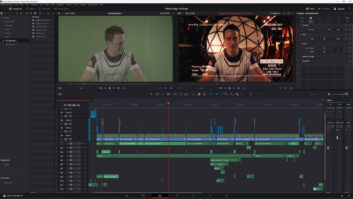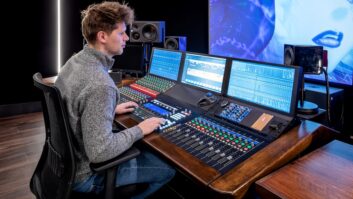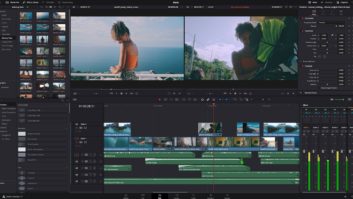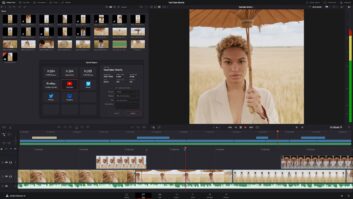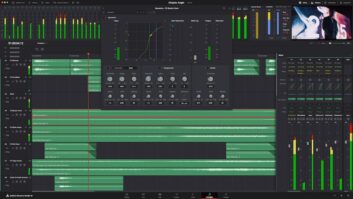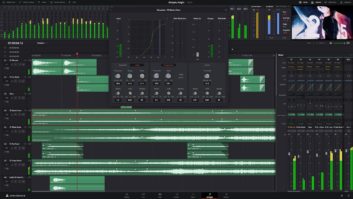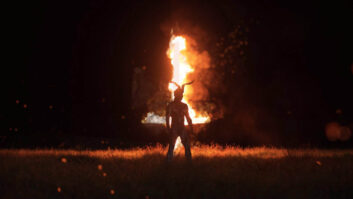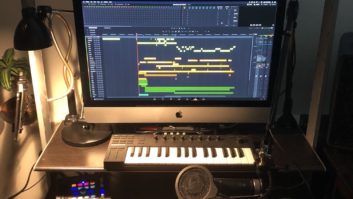Fremont, CA, USA – Thursday, October 27, 2022 – Blackmagic Design today announced that the sci fi horror short film “SpaceX Final Transmission” was posted end to end in DaVinci Resolve Studio editing, grading, visual effects (VFX) and audio post production software. The short comes from filmmaker Patrick Kalyn, an Emmy Award nominated VFX artist and Visual Effects Society Award winner whose credits include “Deadpool 2,” “Blade Runner 2049,” “Avatar” and more.
Kalyn created the two minute short film to dive deeper into the craft of acting, “which in turn, makes me a better director when I’m behind the lens,” he noted. “SpaceX Final Transmission” was inspired by the idea of colonizing other planets, making the human race a multiplanetary species.
Captain Taylor (Kalyn) transmits one final message from a doomed camp on Mars, warning an incoming ship that peril awaits and hinting at a crew gone mad.
“It was the perfect project to put Resolve through its paces. I shot it in my living room with a few lights and a green screen since the film is told through a video message sent by Captain Taylor. The short is part of a larger story that I’m currently writing,” explained Kalyn.
With compositing done in DaVinci Resolve Studio’s Fusion page, Kalyn relied on several tools for the VFX environments, including the Delta Keyer to key out the green screen, clean plate node, Channel Booleans and more.
“I didn’t shoot a clean plate, so I used the clean plate node and cranked up the erode value to fill in the gaps,” he said. “The CG environment was rendered in layers, so I had to assemble the beauty pass in Fusion with Channel Booleans. The landscape you see outside the observation window is an actual picture of Mars’ surface from the new Perseverance rover. Once I had the environment built, I comped random code elements on the computer screens, as well as light dust and debris floating around, so the background didn’t feel totally dead.
“Depth Blur was used to have the focus fall off the further away the environment was from the camera, using the embedded Z depth channel. Finally, I added a soft glow spilling over the character’s shoulder to help marry the background to the plate, as well as a bit of lens distortion on the background to make it feel less CG. The heads up display was the last thing in the comp, built using rectangles and text nodes.”
Kalyn noted that he added dirt and grime to the CG walls by merging several images in multiply mode, using Corner Positioner to match the perspective of where they were placed. “I placed a bloody handprint on the wall where Taylor looks to motivate his eyeline and also show the audience some bad stuff has gone down, which corroborates what he is saying,” he said.
The effects continued into audio post, for which Kalyn relied on DaVinci Resolve Studio’s Fairlight page.
“After I worked on the dialogue, it was a matter of layering in sound effects (SFX) and music from my sound library. I had separate tracks for SFX that happened inside versus outside the observation deck. A heavy low pass filter on the outside tracks’ EQ made it sound like it’s coming through thick walls,” he explained.
Kalyn continued, “I mix as I edit sounds by setting the volume of each sound on a per clip basis. I used the volume sliders for more macro adjustments to the entire track. I love the DIM toggle near the volume slider; it comes in super handy when you’re auditioning sounds, so you don’t shock your ears with loud SFX.”
“The big takeaway from doing this VFX short from end to end inside Resolve is that a filmmaker has everything they need to produce exceptional, high quality content, all inside one software,” he concluded.
Press Photography
Product photos of DaVinci Resolve Studio and all other Blackmagic Design products are available at www.blackmagicdesign.com/media/images
About Blackmagic Design
Blackmagic Design creates the world’s highest quality video editing products, digital film cameras, color correctors, video converters, video monitoring, routers, live production switchers, disk recorders, waveform monitors and real time film scanners for the feature film, post production and television broadcast industries. Blackmagic Design’s DeckLink capture cards launched a revolution in quality and affordability in post production, while the company’s Emmy™ award winning DaVinci color correction products have dominated the television and film industry since 1984. Blackmagic Design continues ground breaking innovations including 6G-SDI and 12G-SDI products and stereoscopic 3D and Ultra HD workflows. Founded by world leading post production editors and engineers, Blackmagic Design has offices in the USA, UK, Japan, Singapore and Australia. For more information, please go to www.blackmagicdesign.com
